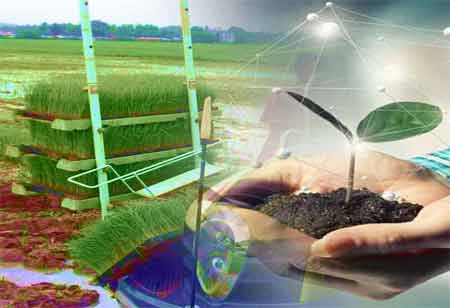

Thank you for Subscribing to Environmental Business Review Weekly Brief

Sustainability initiatives can be found in nearly every industry, including plastic packaging. We must continue to ask ourselves how our industry can truly make a difference. And to answer that question, we are taking a strategic, two[1]pronged approach to sustainability that includes promoting a circular economy and fighting climate change.
Achieving our GHG Emissions Targets At a time when sustainability is ambiguous, it is critical to promote transparency and accountability in areas as important as reducing greenhouse gas emissions. One of the ways companies can make an impact is through committing and setting a Science Based Target. In 2022, Graham began the process of transitioning to a system of external validation of our goals and data, working with the Science Based Targets initiative (SBTi). SBTi establishes a clearly defined pathway for companies to reduce GHG emissions to levels necessary to meet the goals of the Paris Agreement—reduce global greenhouse gas emissions to limit the global temperature increase in this century to 2°C while pursuing efforts to limit the increase even further to 1.5°C. Graham established targets in line with 1.5°C based on the latest climate science—which translates to an approximately 30 percent greenhouse gas emission reduction from baseline by 2030—and submitted those targets for validation to SBTi for review in 2023. To reach this goal by 2030, we are taking a targeted approach with five key levers: reduction in energy intensity; sourcing renewable energy; increasing the use of PCR; lightweighting our bottles; and collaborating with our suppliers to reduce upstream GHG emissions. Finally, to reinforce our commitment to mitigating climate change, we are also aiming to be Net Zero by 2050. Though we are striving toward this north star, we understand that it will require external innovation to achieve. Working Towards a Circular Economy The second part of our strategy is to contribute towards the development of a circular economy. And we’re working toward it on all levels— from increasing PCR use and designing for recyclability to reducing our waste and water consumption. Completing the circle—with plastic continually recycled—will take an orchestrated effort from everyone in the supply chain, from materials manufacturers to brands to consumers. We continue to make strategic investments in shaping our part of the circle to be as efficient as possible. The use of post-consumer resin (PCR) is a key area of focus within our circular economy strategy. With growing customer demand and new legislation focused on incorporating higher percentages of PCR in bottles, Graham has taken an approach that takes advantage of both mechanical and advanced recycling technologies. These include the use of our recycling center with bottle-to-bottle recycling capabilities for HDPE, as well as earning certifications like ISCC Plus and RMS to ensure traceability and transparency of advanced recycled PCR credits. We are also pursuing positive gains in lightweighting through product development efforts including alternate resin trials, PET Active Web, MAB lightweighting and AccuStrength, and through proactive customer collaborations to optimize package weight and size. We have committed ourselves to reducing our GHG emissions and supporting a circular economy, working throughout our organization and across our supply chain to make incremental improvements and find creative solutions. We continue to chart a course based on our values, holding ourselves to a higher standard of industry leadership—shaping a better, more sustainable future for all.